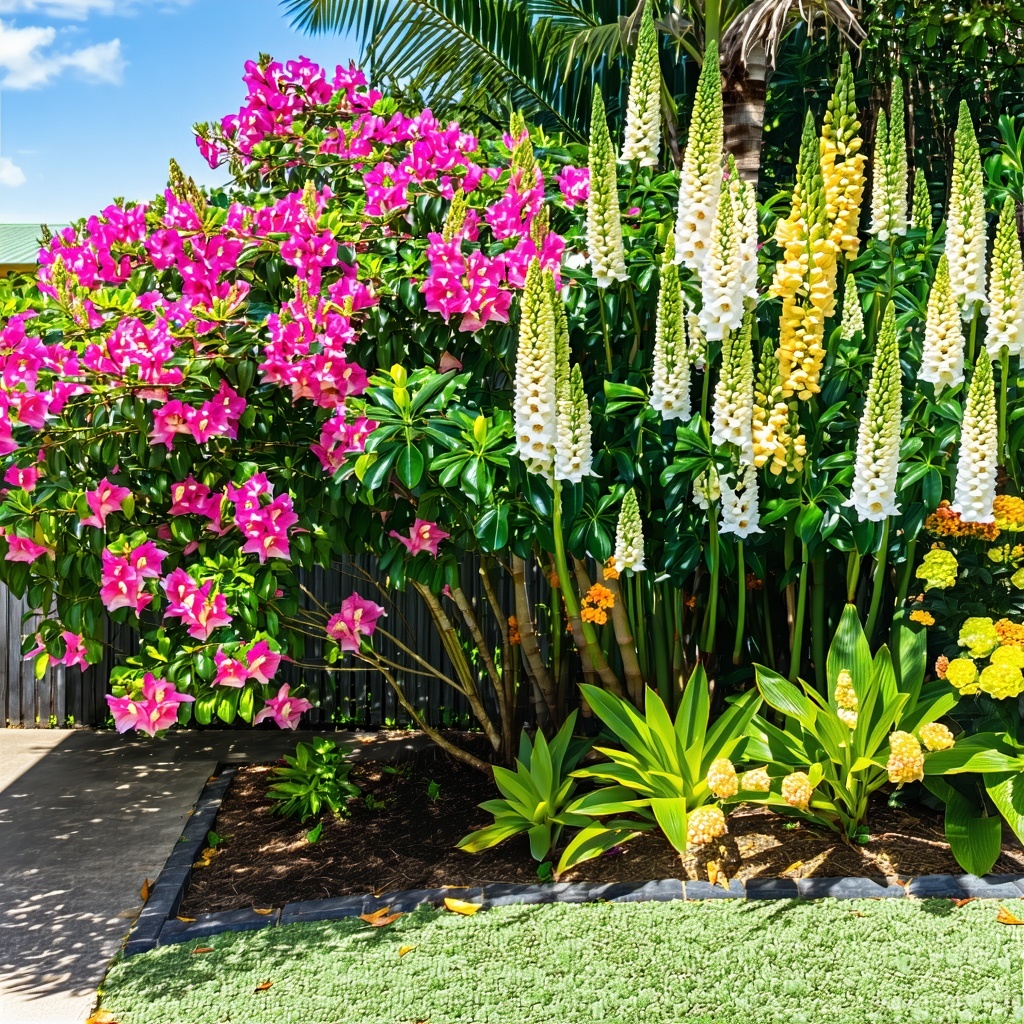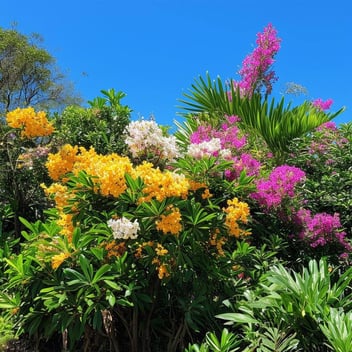Toxic Plants That Thrive in SEQ: A Gardener’s Guide
Introduction
South East Queensland (SEQ) boasts a vibrant tapestry of gardens, where lush greenery and vivid blossoms create picturesque landscapes. However, amidst this botanical beauty lurk plants that, while visually appealing, harbor toxins capable of causing harm to humans and animals. Awareness of these plants is essential for cultivating gardens that are both enchanting and safe.
Understanding Plant Toxicity
Plant toxicity arises from various chemical compounds that serve as defense mechanisms against herbivores and pests. These toxins can affect different systems in the body, leading to symptoms ranging from mild irritation to severe organ failure. Understanding the nature of these toxins and their effects is crucial for gardeners aiming to create safe environments.
Notorious Toxic Plants in SEQ Gardens
Oleander (Nerium oleander)
Oleander is a popular ornamental shrub known for its striking flowers in shades of white, pink, and red. Despite its beauty, all parts of the plant are highly toxic, containing compounds that can cause severe cardiac and gastrointestinal issues if ingested. Even inhaling smoke from burning oleander can be hazardous.
Angel's Trumpet (Brugmansia spp.)
Angel's Trumpet captivates gardeners with its large, pendulous flowers and sweet fragrance. However, this plant contains toxic alkaloids that can lead to hallucinations, paralysis, and other serious health issues upon ingestion. Its alluring appearance belies the dangers it harbors.
Lantana (Lantana camara)
Lantana's colorful clusters of flowers may brighten up a garden, but this plant is toxic to both humans and animals. Ingestion can cause symptoms ranging from mild stomach discomfort to severe poisoning, including liver damage in animals. Its invasive nature further complicates its presence in local ecosystems.
Castor Oil Plant (Ricinus communis)
Known for its large, lobed leaves and spiky seed pods, the Castor Oil Plant contains ricin, a potent toxin. Ingesting even a small amount of ricin can be fatal, making this plant particularly dangerous in gardens accessible to children and pets.
Green Cestrum (Cestrum parqui)
This fast-growing shrub features tubular yellow-green flowers and black berries. All parts of the plant are highly toxic, especially to livestock, and ingestion can lead to severe poisoning or death. Its ability to spread rapidly makes it a significant concern in SEQ gardens.
Common Heliotrope (Heliotropium arborescens)
With its clusters of fragrant purple flowers, the Common Heliotrope is a charming addition to gardens. However, it contains pyrrolizidine alkaloids, which can cause liver damage in humans and animals if ingested. Its toxicity, coupled with its invasive potential, warrants caution.
Delphinium (Delphinium spp.)
Delphiniums are admired for their tall spikes of vibrant flowers. Nonetheless, all parts of the plant are toxic, containing alkaloids that can affect the nervous system and heart. Ingestion can lead to symptoms ranging from nausea to cardiac arrest.
Symptoms of Exposure
Recognizing the signs of plant poisoning is vital for prompt treatment. Symptoms may include:
-
Gastrointestinal distress: Nausea, vomiting, diarrhea, and abdominal pain.
-
Cardiovascular issues: Irregular heartbeat, dizziness, and in severe cases, cardiac arrest.
-
Neurological symptoms: Confusion, hallucinations, weakness, and seizures.
-
Dermal reactions: Skin irritation, rashes, and swelling upon contact with certain plant saps.
Immediate medical attention is crucial if any of these symptoms occur following exposure to a toxic plant.
Preventative Measures for Gardeners
To ensure a safe garden environment:
-
Identify and label: Familiarize yourself with the plants in your garden and label any that are known to be toxic.
-
Restrict access: Keep children and pets away from hazardous plants by using fencing or placing plants out of reach.
-
Educate household members: Inform family members about the dangers of certain plants and the importance of not ingesting unknown flora.
-
Regular maintenance: Remove or relocate toxic plants, especially if they pose a high risk to your household.
Emergency Response Protocols
-
For ingestion: Rinse the mouth with clean water and avoid giving anything by mouth unless advised by a medical professional. Immediate medical assistance is crucial. Contact the Queensland Poisons Information Centre at 13 11 26 without delay, providing the plant’s name or a description if known.
-
For skin contact: Gently remove any plant debris and wash the affected area thoroughly with soap and lukewarm water. Avoid scrubbing, as this can drive toxins deeper into the skin. Seek medical advice if redness, blistering, or irritation persists.
-
For eye exposure: Rinse eyes with clean, lukewarm water for at least 15 minutes, keeping eyelids open and allowing water to flow away from the unaffected eye. Do not rub the eyes. Immediate consultation with a healthcare provider is recommended.
-
For inhalation: If exposure to smoke or airborne plant particles occurs, move the affected person into fresh air immediately. If coughing, breathing difficulty, or dizziness follows, seek medical care urgently.
Quick action can significantly influence the outcome of toxic plant exposures. Having an emergency plan and being prepared with essential contacts ensures prompt and effective responses in critical situations.
Conclusion
The gardens of South East Queensland are undeniably lush, colorful, and full of life. However, with great beauty often comes hidden peril. By cultivating an awareness of toxic plants and adopting preventative strategies, gardeners can foster safe, thriving outdoor sanctuaries.
Choosing the right flora, educating household members, and recognizing the signs of poisoning can transform a potentially hazardous garden into a vibrant, secure haven for families, pets, and wildlife alike. Knowledge is the most potent tool in preserving both the splendor and the safety of our cherished green spaces.
A mindful garden is not only a feast for the senses but a fortress of well-being—a place where nature’s wonder can be admired without fear.




